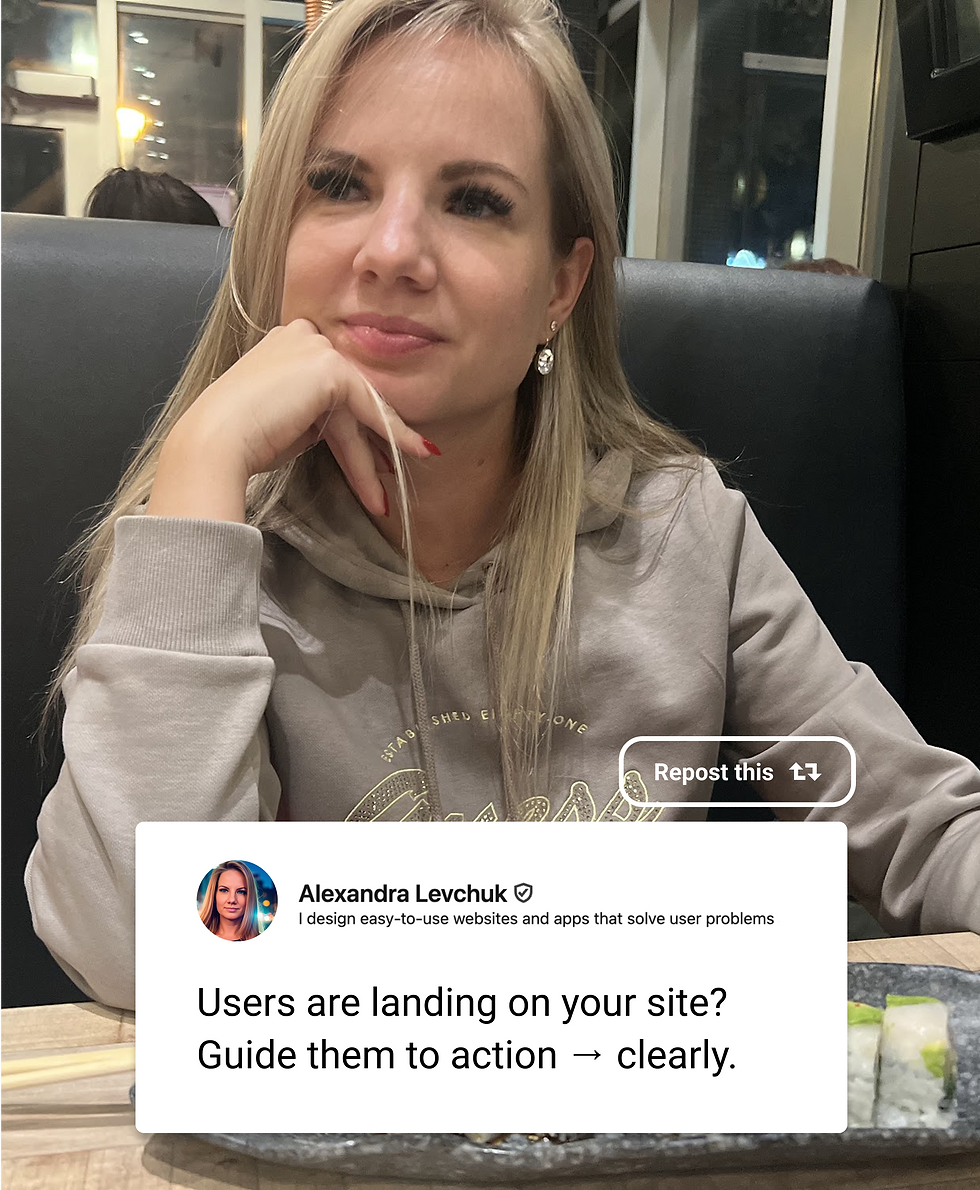If Users Can’t Find Your Call to Action (CTA) in 3 Seconds… You’ve Already Lost Them
- alexandralevchuk
- May 8
- 2 min read
Updated: May 11

Let’s be honest — most people don’t read your site.
They scan. Fast.
And if they can’t spot your Call to Action (CTA) right away?
They bounce.
No click. No signup. No conversion.
Why CTAs Fail (Even on Beautiful Websites)
You can have a stunning UI — sleek colors, clean typography, even great visuals — but still miss the mark if your call to action (CTA) is buried or unclear.
Here’s what I see far too often:
❌ Buttons lost in a sea of clutter
❌ Multiple messages fighting for attention
❌ No visual priority for the Call to Action (CTA)
In short? Pretty doesn’t convert. Clarity does.
Design Your Call to Action (CTA) to Convert
If you want users to act, don’t make them think. Start with:
✅ Make the next step obvious Don’t be subtle. Guide users with bold, clear actions.
✅ Use visual hierarchy Headlines, spacing, and contrast should lead the eye straight to your CTA.
✅ Place your CTA where attention naturally flows Don’t hide it below the fold or in a modal. Keep it visible and accessible.
✅ Write button copy that answers: “What’s in it for me?” “Learn more” doesn’t cut it. Try “Show me how it works” or “Start my free trial.”
Before You Increase Your Ad Budget… Fix This First
If you’re pouring money into traffic but users aren’t converting, look at your design before your ad spend.
A great user experience removes hesitation.
It leads with clarity.
And it starts with a strong Call to Action (CTA).
Pro Tip: Audit your own homepage. Can someone find your primary CTA within 3 seconds of landing?
If not, you know what to fix first.




Comments